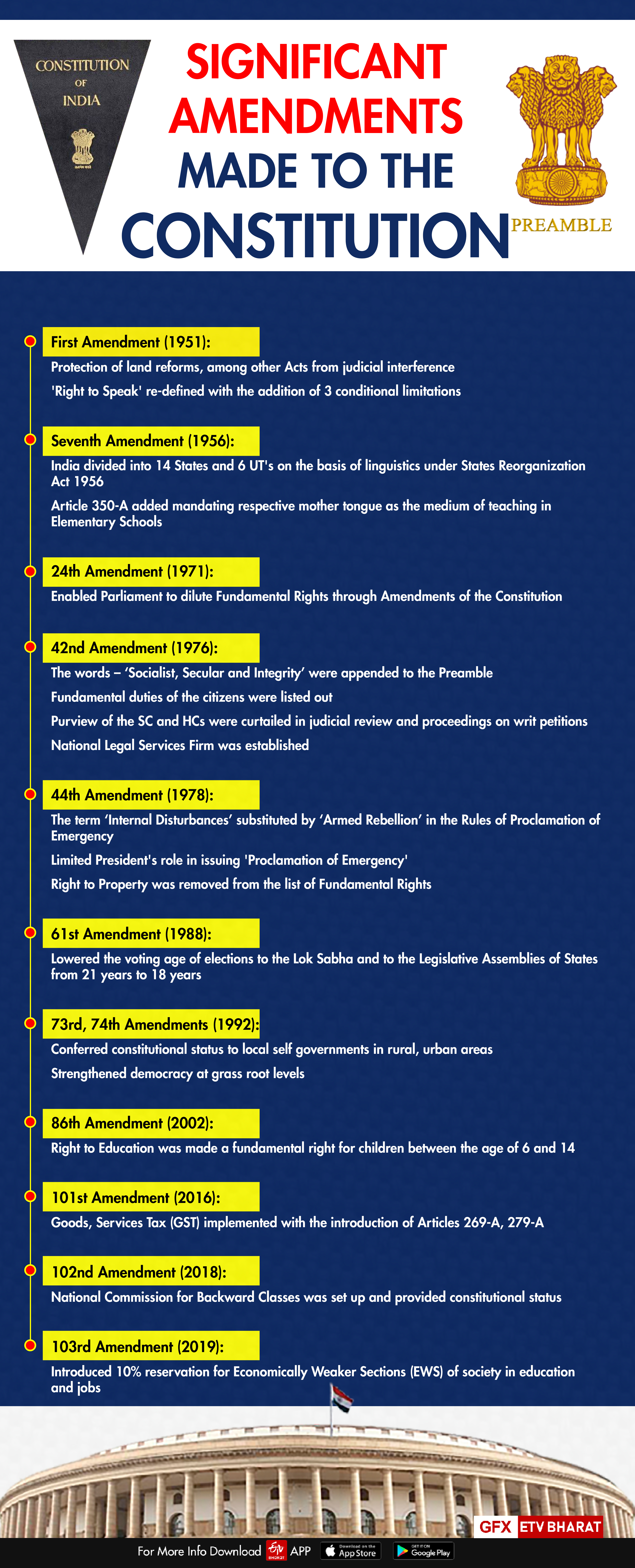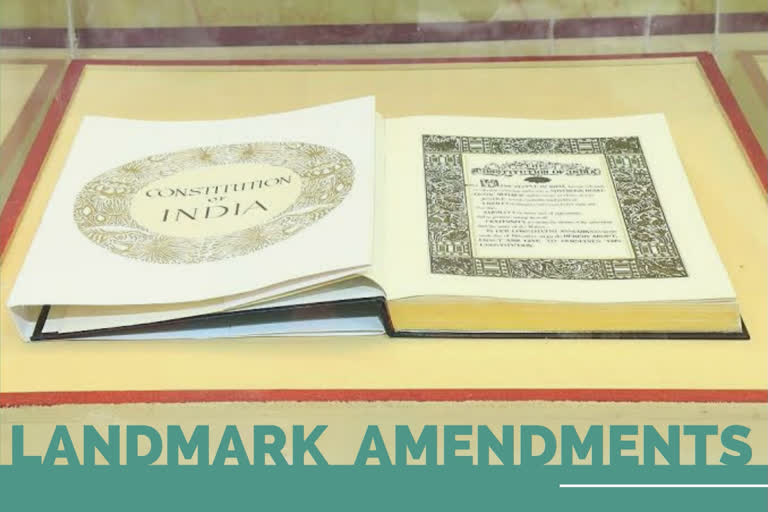Hyderabad: The Indian Constitution has, so far, made about 103 amendments to suit the ever-appending challenges, and the ever-changing requirements of the society, without affecting the sole reason of the existence of the Constitution.
On National Constitution Day, here is a look at a few landmark amendments:
First Amendment (1951)
The fundamental right, 'Right to Speak' was re-defined with the addition of three conditional limitations. The zamindari system was also abolished.
Seventh Amendment (1956):
The whole country was divided into 14 states and 6 Union Territories on the basis of linguistics. To protect the languages, Article 350-A was added to include the policy of mandating the medium of teaching as the respective mother tongue in the Elementary Schools.

24th Amendment (1971):
The Amendment provided Lok Sabha the power to amend any part of the Constitution. Any Constitutional amendment passed by both the houses was required to be approved by the President of India.
42nd Amendment (1976):
The words – 'Socialist, Secular and Integrity' were appended to the preamble. Further, the fundamental duties of the citizens were listed out. Purview of the Supreme Court and High courts were curtailed in judicial review and proceedings on writ petitions. National Legal Services Firm was also established.
44th Amendment (1978):
In the Rules of Proclamation of Emergency (in the event of declaration of an emergency), the word 'Internal Disturbances' was substituted by the word - 'Armed Rebellion'. A provision was included stating that the President will not issue a Proclamation of Emergency unless the decision of the Union Cabinet on the declaration has been communicated to him in writing. The Right to Property was removed from the category of Fundamental Rights.
Read: Even after 7 decades, Constitution still relevant today: Prakash Ambedkar
61st Amendment (1988):
When Rajiv Gandhi was the Prime Minister in 1988, the 61st amendment to the Constitution lowered the minimum age for voting to 18 years, from 21 years. This helped the new generation youth, as young as 18, to voice their selection of the leaders.
73rd, 74th Amendments (1992):
Local Self Governance was introduced. Gram Panchayats and Urban Local bodies were entrusted with Constitutional status. A new Part on 'Municipalities' was also added.
86th Amendment (2002):
A new article was inserted that made Right to Education a fundamental right to the children between age of 6 to 14. It provided free and compulsory education.
101st Amendment (2016):
Goods, Services Tax (GST) was implemented with the introduction of Articles 269-A, 279-A.
102nd Amendment (2018):
Set up and provided constitutional status to the National Commission for Backward Classes. The Commission was given the authority to examine complaints and welfare measures regarding socially and educationally backward classes.
103rd Amendment (2019):
Introduced 10 per cent reservation for Economically Weaker Sections (EWS) of society in education and jobs.
Read: Remembering Rajendra Prasad's contribution to India's Constitution



